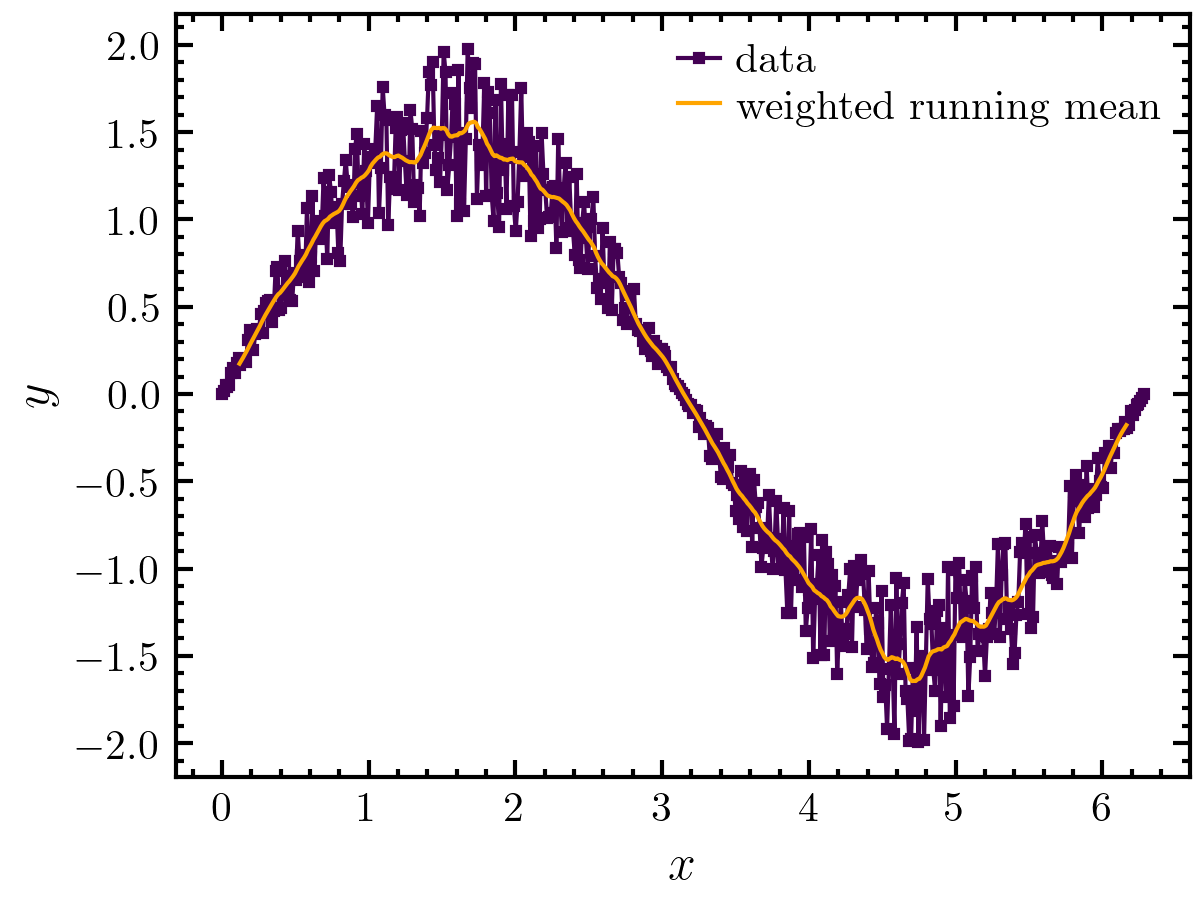amep.utils.weighted_runningmean#
- amep.utils.weighted_runningmean(data, nav: int, kernel: str | ndarray = 'homogenous', mode: str = 'valid', width: float = 1.0) ndarray#
Compute the weighted running mean of a 1-dimensional array.
The weights can be specified as a kernel matrix, or one of the preset variants.
- Parameters:
data (np.ndarray) – input data of shape (N, )
nav (int) – length of the kernel if standard is chosen
kernel (str|np.ndarray) – Kind of kernel to be used for weights. Possible are homogenous, triangle and gauss. Provided a fitting array will also use normed version of this to weight. Weight array should have positive entries. Otherwise use np.convolve directly.
mode (str) – ‘same’, ‘valid’, or ‘full’
width (float) – width of the gaussian. Only effective when using gaussian kernel.
- Returns:
averaged data
- Return type:
np.ndarray of shape (N-(nav-1), )
Examples
>>> import amep >>> import numpy as np >>> x = np.linspace(0,2*np.pi,500) >>> y = np.sin(x)*(1+np.random.rand(len(x))) >>> yav = amep.utils.weighted_runningmean( ... y, kernel='triangle', nav=20 ... ) >>> xav = amep.utils.weighted_runningmean( ... x, kernel='homogenous', nav=20 ... ) >>> fig, axs = amep.plot.new() >>> axs.plot(x, y, label='data') >>> axs.plot( ... xav, yav, label='weighted running mean', ... marker='', c='orange' ... ) >>> axs.legend() >>> axs.set_xlabel(r'$x$') >>> axs.set_ylabel(r'$y$') >>> fig.savefig('./figures/utils/utils-weighted_runningmean.png') >>>

